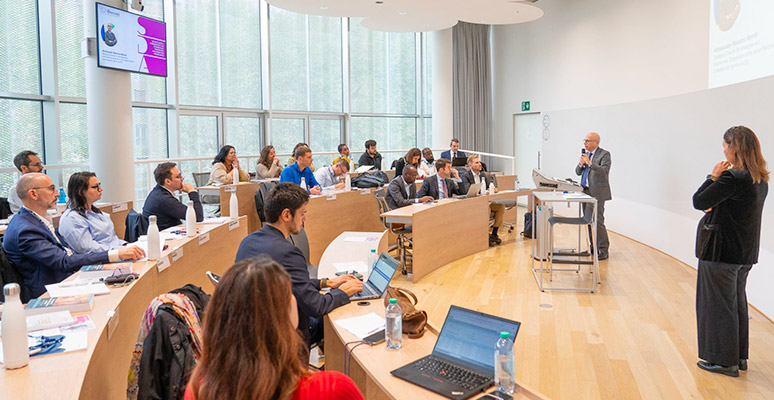
- Start date
- Duration
- Format
- Language
- 19 Nov 2025
- 2,5 days
- Blended
- Italian
Il corso apre le porte al mondo della valutazione dell’impatto sociale.
By Elisa Ricciuti, Public Management and Policy
CHANGING THE SYSTEM OF SOCIAL INVESTMENT IS THE WATCHWORD EMERGING FROM A SURVEY CONDUCTED BY BOCCONI CERGAS ON 339 PHILANTHROPISTS. CONVERSELY, FEW INTERVIEWEES REFERRED TO THE CONCEPT OF SUSTAINABILITY
Philanthropy, both individual and institutional, is growing globally. In Europe there are now over 160,000 non-profit organizations, with almost €500 billion in assets and over €60 billion in yearly disbursements (the data, likely to be underestimated, are from EFC, 2018). Philanthropic investments through DAFs, Donor Advised Funds, grew by 10.4% from 2015 to 2016. Even the giving gap between Continents has greatly reduced: if only 5 years ago there were 7 percentage points of difference between the Americas and Africa, now it soli only 1 percentage point (CAF, 2018).
Philanthropy is also changing face. Either because of growing economic inequality (as of 2017, 50% of global wealth in 2017 was in hands of just 8 people, down from 388 in 2010, Oxfam 2017 data), increased access to technology, or a renewed attention to sustainability by companies and newer generations, the boundaries between what is a pure donation and what is a social investment are increasingly less clear. The advance of impact investing ($228 billion, as estimated by Giin, 2018) has contributed to the encounter of philanthropy with social finance and various actors that have taken the role of social investors: individuals, foundations, funds, social enterprises, the public sector, private and public partnerships, and so on.
If it is true that these actors are investing larger and larger resources in local communities to respond to social, cultural and environmental needs, we should ask which vision of impact investment and sustainability they bring, either in policy environments or in their own network. Since resources coming from public budgets are extremely limited (let's always remember that), these actors contribute to social, cultural and economic change through social innovation and experimentation with new governance models and service solutions. In fact, they add economic, cognitive and experiential capital to the not-for-profit sector, from which they often expect a stronger effort to report and represent the change generated.
So how do social investors understand, represent, measure, and assess social impact? This is the question investigated by a study conducted by CERGAS, Bocconi’s research center in health management and social policy, which mapped 339 social investors across the world, while focusing predominantly on Europe (282 interviewees). Of these, 134 (for a total of over €106 billion in assets and €20 billion in disbursements) were selected for the attention devoted to the issue of social impact. Their evaluation models were analyzed and 20 presidents, general managers or impact managers were interviewed (representing €42 billion in assets and €2 billion in disbursements). What has emerged? For most investors, impact means system change. However, this is articulated in a number of ways and the tools used are very different, from equity investment to micro-grants, to various types of non-cash support (among which network, training, and advocacy stand out). The recourse to the concept of sustainability is still very limited and its notion often vague. The use of a wide range of evaluation methods has also emerged, from quantitative analyses to a mixed approach, with a significant increase in tailor-made tools and qualitative analysis. Finally, it is surprising that the greatest criticality detected by interviewees is perceived to be internal to their organizations. Spreading the culture of impact within one's own organization has proved to be the number one concern of all top executives, who find it complex to work with data and justify the need for internal evaluation. This should be fodder for thought for the international community of social investors, who are increasingly wondering about their in a rapidly changing economic, social and cultural environment, with the related need for greater for innovation.
Source: ViaSarfatti25

Il corso apre le porte al mondo della valutazione dell’impatto sociale.

To grasp international art market dynamics and understand the roles of collectors, investors, galleries, advisors, fairs, and auction houses.

